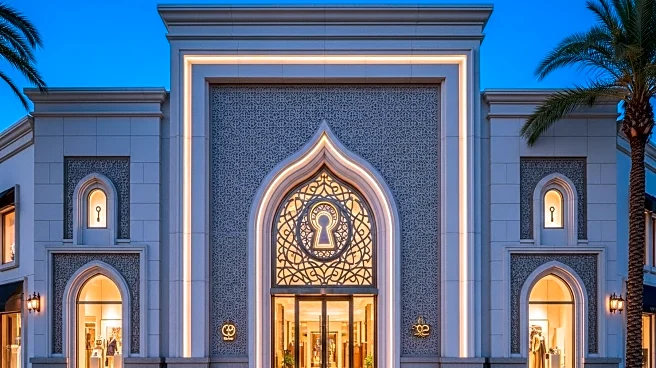What is the story about?
What's Happening?
Louis Vuitton is set to open a new flagship store in Beverly Hills, designed by Frank Gehry and Peter Marino, which aims to redefine luxury retail by focusing on experiential elements. The store will span 100,000 square feet and include immersive exhibitions, high-jewelry salons, and a rooftop restaurant. This approach is part of LVMH's strategy to create 'iconic brand destinations' that deepen emotional connections with customers, prioritizing experience over pure sales. The store is expected to generate significant revenue, potentially reaching $675 million annually, by attracting ultra-high-net-worth individuals and aspirational consumers. This aligns with LVMH's focus on high-performance retail assets that balance premium pricing with strategic scarcity.
Why It's Important?
The opening of Louis Vuitton's Beverly Hills flagship represents a significant shift in luxury retail strategy, emphasizing brand equity and cultural capital over traditional sales models. By embedding cultural and artistic elements into its retail spaces, Louis Vuitton strengthens its identity as a 'cultural brand,' differentiating itself from competitors and insulating against commodification. This strategy not only enhances brand exclusivity but also drives direct sales and social media engagement. The store's design and offerings are expected to fortify LVMH's margins, despite recent declines in organic sales, demonstrating the power of brand-driven pricing and disciplined cost management.
What's Next?
The Beverly Hills flagship is poised to become a landmark in luxury retail, attracting global attention and media coverage. Its success could influence other luxury brands to adopt similar strategies, focusing on experiential retail and brand-driven real estate. LVMH's broader investments in digital engagement and localized campaigns signal a balanced approach to navigating macroeconomic headwinds, potentially setting a new standard for luxury retail ecosystems where physical and digital experiences converge.
Beyond the Headlines
The store's emphasis on architectural differentiation and localized demand highlights a new paradigm in luxury retail, where physical locations serve as both profit centers and equity-building tools. This model contrasts sharply with the profit-driven strategies of American luxury brands, which often rely on outlet channels and digital commodification, risking brand equity dilution. LVMH's controlled distribution strategy sustains scarcity while leveraging flagship stores to justify premium pricing, ensuring long-term relevance in a market increasingly influenced by digital and experiential trends.
AI Generated Content
Do you find this article useful?

